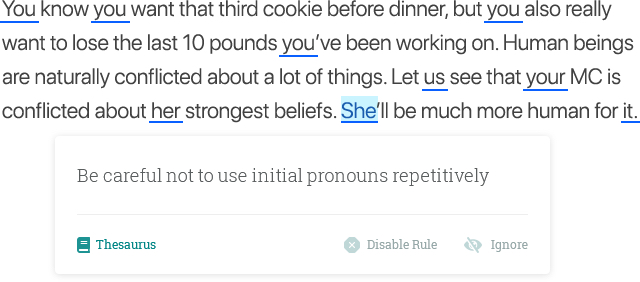
You can be a writer without being a starving artist.
In fact, plenty of writers make a healthy living from their craft. Some even crest six figures.
That’s hard to do writing novels, poetry, or magazine articles. But it’s not all that difficult if you turn your skills to a more in-demand kind of writing — copywriting.
If writing a best-selling novel is your secret (or not-so-secret) hope, or your favorite fantasy is about being invited to read your poetry at esteemed universities, you can fund those dreams using what you already know and love: writing.
If you turn your skills to commercial freelance writing, a few great things can happen for your creative writing career:
- Many freelancers earn enough to leave their day job, which frees up more time to work on your novel, your poetry, or your next award-worthy magazine article.
- The writing techniques you learn working on commercial projects can help you market the projects you are more passionate about.
- Commercial writing performs better when there’s a healthy dose of creativity in the mix — stories sell — so quite a few creative writers find that copywriting is satisfying and rewarding in its own way.
There are many different kinds of projects you can work on that pay well, so chances are good you can find one you enjoy. Here, you’ll find seven writing projects that pay well, and that you may not have considered… until now.
- 1. Stories That Sell — Writing Case Studies
- 2. Helping Business Grow Their List — Writing Special Reports
- 3. A Gift That Keeps on Giving — Writing E-letters
- How to Write Better Copy
- 4. A Higher-Tier Repeat Gig — Writing Print Newsletters
- 5. Put Your Persuasive Skills to the Test — Writing Sales Pages
- 6. Make the Headlines — Writing Press Releases
- 7. Try Your Hand at Script Writing — Writing Videos
- Final Thoughts
1. Stories That Sell — Writing Case Studies
Among the most enjoyable business writing projects to work on, case studies are basically stories that sell.
To write a case study, you interview your client along with one of their customers. You find out what problem the customer was facing and how your client helped them to solve it. And then you write it all up as an interesting, visually rich story. (Don’t worry — your client will have a graphic designer to pair you with, or you can let them know up front that you handle the writing and the design is up to them.)
Case studies typically run about four written pages. If your reader has a similar problem to your client’s customer, they’ll be able to immediately relate to the story you’re telling. Ideally, they’ll contact your client to pursue a solution of their own. Success!
Most business-to-business (B2B) companies expect to pay between $1000 and $1500 for a well-written case study.

2. Helping Business Grow Their List — Writing Special Reports
Have you ever signed up for an email list because they were offering a special report you were really interested in?
Most people have.
Usually, those special reports are written materials. Someone has to write them–and that someone gets paid.
A well-written special report begins with an intriguing idea. It goes on to explore that idea in-depth, providing plenty of actionable information along the way. These reports are generally between 2 and 20 pages long. Sometimes, even longer.
Most companies expect to pay between $1500 and $5000 for a good-quality special report, depending on its length. These reports are fun to write and can lead to more varied and interesting projects with the same client.
3. A Gift That Keeps on Giving — Writing E-letters
One of the best writing assignments to land as a freelancer is a weekly e-letter. Because it’s a weekly assignment, it provides a reliable source of income.
Hiring freelancers isn’t an easy process for most companies. It takes effort and thought. When a company finds a writer who does a good job with their e-letter, they aren’t likely to look for a replacement without a pressing reason. So there’s job stability, too.
Writing an e-letter is similar to writing an article. You need to frame your topics to appeal to your audience, maintain a consistent voice, provide useful and entertaining information, and write in a clear and organized way.
Most companies pay between $150 and $500 for a weekly e-letter. That’s week in and week out. It doesn’t take very many clients to build a comfortable, steady income.
How to Write Better Copy
You may have noticed that most of these gigs rely on you being a good writer - one who can convert special reports into sales and copy into customers. You'll need to make sure your writing is up to par every time you submit to keep your reputation strong and keep those clients coming back.
ProWritingAid is like an extra pair of eyes looking over your work. The editing tool makes the same suggestions that a copyeditor would when looking over a manuscript, making sure that everything from your e-letters to your case studies are the best they can be.
This isn't just another grammar checker. ProWritingAid helps to learn more about your own writing, highlighting areas such as repeated sentence starts, over-reliance on pronouns, a consistency check and so much more.

ProWritingAid allows copywriters and content creators like you self-edit more effectively before they hit “publish”.
Now, back to those writing gigs!
4. A Higher-Tier Repeat Gig — Writing Print Newsletters
A lot of businesses — particularly professional services businesses — send out a print newsletter once a month to their list of current and previous customers. It keeps them at top-of-mind with their customer base and helps to generate a sense of loyalty.
It also serves as a reminder. If you’re due for a dental cleaning, for example, and receive your dentist’s monthly letter on good oral care, that may be the trigger that leads you to make an appointment.
Some professionals write their newsletters themselves, but many don’t have the time. They want to provide consistently excellent quality to their customers, so they hire it out to a writer like you.
These newsletters usually run two to four pages and contain multiple articles. Most businesses expect to pay between $500 and $1000 for this service. It’s another steady gig that can really add up quickly once you’ve landed a few clients.

5. Put Your Persuasive Skills to the Test — Writing Sales Pages
Writing editorial copy — copy that informs and sometimes lays the groundwork for a sale — is a good gig. But sales copy pays more per project.
The closer you are to a client’s bottom line, the more you can charge.
Learning to write pay-per-click ads, the landing pages they lead to, and product sales pages are all types of copy that can pay handsomely. Landing pages can run from $500 to $5000 (or more) depending on the length.
In today’s market, the Internet makes it possible to test and track results, so your client will know when you’re making them sales. They’ll keep hiring you and they’ll give you good referrals, too.
Sales writing is more demanding than editorial, but if you like a good challenge, the rewards are excellent.
6. Make the Headlines — Writing Press Releases
Online companies are always on the lookout for new sources of web traffic and new ways to get their name in front of potential customers in a credible way.
Getting picked up by the national — or even local — news outlets is a very, very effective way to do both.
A writer capable of producing a press release that news outlets publish is a writer who will always be in demand. Most companies pay between $500 and $1000 per press release. If your releases get picked up on a regular basis, your clients will come back to you again and again.
7. Try Your Hand at Script Writing — Writing Videos
You may have noticed that video is big on the Internet right now. Companies certainly have. They are turning to video for content marketing, commercials, sales letters, interviews, customer engagement, how-to instructions, and more.
And for every video, there’s a writer creating a script. Most writers get paid between $100 and $200 per minute of run time. If you write a script for a five-minute video, that could be worth up to $1000 in your bank account.
Final Thoughts
Writing is a valuable, in-demand skill. Don’t let anyone tell you different. And if you’re a good writer, you can make a very good living writing content and copy for online businesses, with time to spare to pursue your creative projects like writing the next great American novel.
You can learn more about online writing opportunities at Wealthy Web Writer. Wealthy Web Writer is a membership site that provides a variety of resources to working and aspiring online copy and content writers, including how-to videos, in-depth tutorials, webinar presentations, and more. I've found it invaluable in finding new projects to work on!

